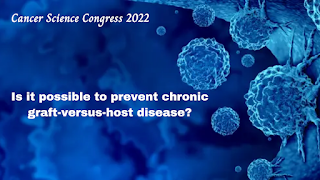Is it possible to prevent chronic graft-versus-host disease?
A procedure termed an allogeneic stem cell
transplant can deliver the most wished-for outcome in cancer treatment: a cure,
for certain patients with severe blood malignancies like certain forms of
leukemia.
However, graft-versus-host disease, a
long-term, devastating disorder, can occur as a result of the treatment (GVHD).
When immune cells from the donor are supplied together with stem cells during
transplantation, they target healthy tissues in the recipient's body as well as
cancer cells, resulting in GVHD.
A recent study suggests that eliminating immunecells known as naïve T cells from donor cells before transplantation may be a
technique to avoid persistent GVHD after a stem cell transplant. The
researchers discovered that this significantly lowered the probability of
chronic GVHD in study participants while having no effect on their chances of
recurrence.
Blood malignancies are caused by stem cells in the
bone marrow, which create all of the body's blood cells, including the white
blood cells that fight infections. People with some severe kinds of blood
cancer may need an allogeneic stem cell transplant as part of their treatment.
High doses of chemotherapy and, in certain cases, radiation treatment
are used to destroy the bone marrow, which is where the stem cells reside. The
patient is then given an infusion of healthy stem cells from a matched donor,
usually a family member, to reduce the chances of transplant rejection and
GVHD.
Immunosuppressive medications can have negative side effects and
increase the risk of infection. They can also be problematic if cancer recurs.
People on these medicines can't get immunotherapies like CAR T cells, but they
also can't quit taking them without their GVHD getting worse.




Comments
Post a Comment